What follows is the paper I gave at the AAIHS conference in Nashville. I was on a S-USIH sponsored panel with our very own Robert Greene II who gave a paper on the southern black left in recent US history and that was chaired by the dynamic scholar Zandria Robinson. I learned tons from the critical comments I received, and from other sessions I attended, particularly sessions dedicated to the work of W.E.B. Du Bois and Cedric Robinson. The latter session, which was a roundtable on the legacy of Robinson that included three memorable presentations by Minkah Makalani, Tiffany Ruby Patterson, and Stephen Ward, proved particularly humbling. It made me realize how much I have yet to learn about Cedric Robinson and the black radical tradition. That panel, and several others at the conference, also made me realize that my paradigms are not the same as many AAIHS scholars. It is for this reason that my mind has been on fire ever since Nashville. I will definitely return to AAIHS next year and in the years to come. Thanks to all who have worked hard to make it happen. (For regular S-USIH readers, some of this material will seem familiar, but much of it is new.)
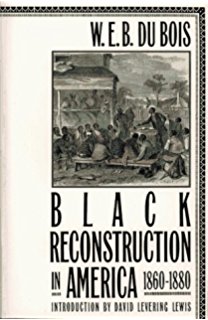 Two of the greatest history books ever written emerged three years apart: W.E.B. Du Bois’s Black Reconstruction in America (1935) and C.L.R. James’s The Black Jacobins: Toussaint L’Ouverture and the San Domingo Revolution (1938). Both were about race, class, slavery, capitalism, and revolution, and both were forged with comparable purposes. Du Bois and James sought that their historical insights about revolutions past would speak to revolutions future.
Two of the greatest history books ever written emerged three years apart: W.E.B. Du Bois’s Black Reconstruction in America (1935) and C.L.R. James’s The Black Jacobins: Toussaint L’Ouverture and the San Domingo Revolution (1938). Both were about race, class, slavery, capitalism, and revolution, and both were forged with comparable purposes. Du Bois and James sought that their historical insights about revolutions past would speak to revolutions future.
Du Bois wished for his trailblazing analysis of the Civil War and Reconstruction to endow the wisdom of past struggles upon the coming movement for black rights in the United States. James hoped that his remarkable inquiry into the Haitian Revolution would speak to the emerging anticolonial movements in Africa.
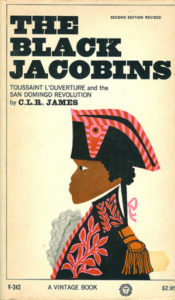 The similarities between Black Reconstruction and The Black Jacobins do not end there. Both books have been comparably received since publication. Although black and radical readerships praised them immediately upon publication, not until the 1960s did they reach large mass audiences. By that point many more people were ready to accept the radical conclusions drawn by Du Bois and James. It was then that Black Reconstruction won its place as arguably the single most important book in reshaping American historiography. It was also in the 1960s when The Black Jacobins was heralded as a formative text in the growing international study of the African diaspora.
The similarities between Black Reconstruction and The Black Jacobins do not end there. Both books have been comparably received since publication. Although black and radical readerships praised them immediately upon publication, not until the 1960s did they reach large mass audiences. By that point many more people were ready to accept the radical conclusions drawn by Du Bois and James. It was then that Black Reconstruction won its place as arguably the single most important book in reshaping American historiography. It was also in the 1960s when The Black Jacobins was heralded as a formative text in the growing international study of the African diaspora.
There is more. Both Du Bois and James wrote their canonical studies with Marx on their minds. Black Reconstruction and The Black Jacobins were earth-shaking at least in part for their Marxism, however eclectic and revisionist. Marx and the Marxist tradition helped Du Bois and James achieve remarkable literary and historiographical accomplishments. But on the flip side, Du Bois and James expanded upon Marx and the Marxist tradition in ways that gave twentieth-century readers a new and better understanding of capitalism, one that more fully accounted for the plunders of slavery, colonialism, and genocide, or what Marx called “primitive accumulation.”
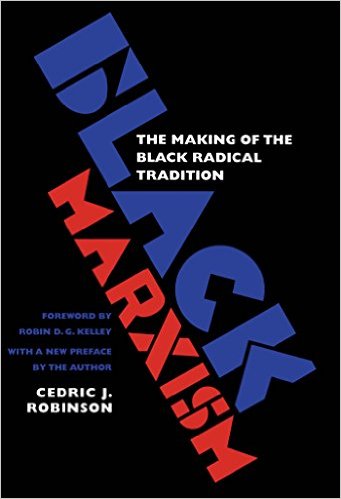 I am hardly the first person to put Marx, Du Bois, and James into conversation with one another. Cedric Robinson’s classic 1983 book, Black Marxism: The Making of the Black Radical Tradition, endowed us with creative genealogies of both the Marxist and black radical traditions and argued that these two distinct discourses were married in the work of Du Bois and James (and Richard Wright, who for the sake of time and space is not analyzed in this paper). In short, Du Bois and James personified Black Marxism, a theory of history and revolution that revised Marx and that, to Robinson’s mind, was far superior to the original.
I am hardly the first person to put Marx, Du Bois, and James into conversation with one another. Cedric Robinson’s classic 1983 book, Black Marxism: The Making of the Black Radical Tradition, endowed us with creative genealogies of both the Marxist and black radical traditions and argued that these two distinct discourses were married in the work of Du Bois and James (and Richard Wright, who for the sake of time and space is not analyzed in this paper). In short, Du Bois and James personified Black Marxism, a theory of history and revolution that revised Marx and that, to Robinson’s mind, was far superior to the original.
Black Marxism made two major historical arguments that have shaped the conceptual frameworks of many scholars. First, Robinson isolated a “black radical tradition” that is distinct from Marxism and other radical European political philosophies in that it is often grounded in African and syncretic cultural forms and movements “whose objectives and aspirations,” in the words of Robin D.G. Kelley, “confounded Western social analysis.”
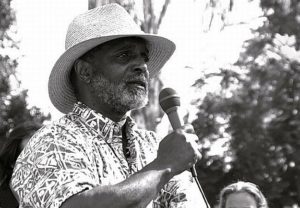 Second, Robinson located something he called “racial capitalism.” Simply put, the history of capitalism cannot possibly be understood apart from the history of racism, slavery, imperialism, and genocide. Capital accumulation—profit—was dependent on the enslavement and murder of millions of people of color. Sociologist Oliver Cox, who was influential to Robinson and many more, said that Marx’s “‘primitive accumulation’ is none other than fundamentally capitalist accumulation.” According to Robinson Marx largely ignored racial capitalism or explained away aspects of it like slavery as vestiges of a feudal order because such notions did not fit with his ideas about how capitalism produced “its own gravediggers.” In other words, for Marx revolution would happen in the advanced nations of Europe because it was there that capitalism had developed an industrial working class that was ready to throw off its chains. For Robinson, this was a view of capitalism limited by Marx’s provincial focus on Europe proper. For a more encompassing analysis, Marx should have focused more on European empire.
Second, Robinson located something he called “racial capitalism.” Simply put, the history of capitalism cannot possibly be understood apart from the history of racism, slavery, imperialism, and genocide. Capital accumulation—profit—was dependent on the enslavement and murder of millions of people of color. Sociologist Oliver Cox, who was influential to Robinson and many more, said that Marx’s “‘primitive accumulation’ is none other than fundamentally capitalist accumulation.” According to Robinson Marx largely ignored racial capitalism or explained away aspects of it like slavery as vestiges of a feudal order because such notions did not fit with his ideas about how capitalism produced “its own gravediggers.” In other words, for Marx revolution would happen in the advanced nations of Europe because it was there that capitalism had developed an industrial working class that was ready to throw off its chains. For Robinson, this was a view of capitalism limited by Marx’s provincial focus on Europe proper. For a more encompassing analysis, Marx should have focused more on European empire.
It is certainly true that Marx’s world-famous Communist Manifesto, which he wrote in 1848 with Friedrich Engels, focused on capitalism as a system that was upending European feudalism (even as it hinted at globalization). This made sense given that Marx and Engels wrote the Communist Manifesto in response to the failed European revolutions of 1848. But much of Marx’s later writings extended his analysis beyond Europe. In Capital, when seeking to understand the rise of industrial capitalism, Marx wrote the following:
The discovery of gold and silver in America, the extirpation, enslavement and entombment in mines of the indigenous population of that continent, the beginnings of the conquest and plunder of India, and the conversion of Africa into a preserve for the commercial hunting of blackskins, are all things which characterize the dawn of an era of capitalist production. These idyllic proceedings are the chief moments of primitive accumulation.
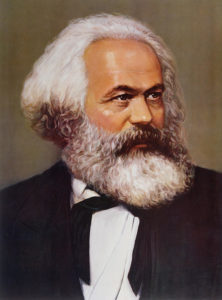 Thus it would seem that Marx anticipated the analytical turn to “racial capitalism.” But elsewhere in Capital, Marx tended to treat slavery as an analogy for the relations of production that mattered most to him: those between the implicitly European factory owners and the implicitly European factory workers. Moreover, Marx argued in Capital and elsewhere that as capitalism expanded its reach across the globe it would render slavery and other forms of primitive accumulation to the dustbins of history. Capitalism for Marx was at once both progressive and horrible. This paradox is evident in Marx’s Civil War writings.
Thus it would seem that Marx anticipated the analytical turn to “racial capitalism.” But elsewhere in Capital, Marx tended to treat slavery as an analogy for the relations of production that mattered most to him: those between the implicitly European factory owners and the implicitly European factory workers. Moreover, Marx argued in Capital and elsewhere that as capitalism expanded its reach across the globe it would render slavery and other forms of primitive accumulation to the dustbins of history. Capitalism for Marx was at once both progressive and horrible. This paradox is evident in Marx’s Civil War writings.
During the Civil War, Marx wrote numerous articles supporting the Union, and even exchanged a letter with President Lincoln. Marx and Lincoln had starkly different views of the world. Whereas Lincoln championed the capitalistic free labor system under development in the north and northwest United States, Marx was the world’s most famous critic of capitalism and equated free labor with “wage slavery” because workers had no choice but to sell their labor to survive. And yet, both men had an intense hatred for chattel slavery, and during the Civil War, Marx became one of the smartest and most influential supporters of Lincoln’s cause.
At the outset of the Civil War, many European radicals were hesitant to criticize the rebellious southern states since they believed in national self-determination and, more to the point, because they were confused about the reasons for southern secession. But Marx convinced the members of the International Workingmen’s Association—most famously remembered as the First International, or simply, the International—that the Civil War was about slavery, and that defeating the Confederacy would be a blow to transatlantic slavery, and thus an important step towards working-class emancipation. Union victory, Marx believed, would create conditions more favorable to organizing the working class, since a free labor system would no longer need to compete with slavery. It was through this lens that Marx viewed Lincoln. “The workingmen of Europe,” Marx wrote in a letter to Lincoln on behalf of the International, “consider it an earnest of the epoch to come, that it fell to the lot of Abraham Lincoln, the single-minded son of the working class, to lead his country through matchless struggle for the rescue of an enchained race and the reconstruction of the social world.”
Marx’s letter to Lincoln heralded a hopeful future for American socialism. Perhaps the international left that Marx had helped cultivate across Europe would take root in the United States. Perhaps the radicalism of the abolitionist movement would carry over into a militant, class-based movement of the sort that Marx and his comrades idealized. Many abolitionists, not satisfied with ending race-based chattel slavery, turned their righteous anger against a labor system they likened to wage slavery. Wendell Phillips declared in response to the 1871 Paris Commune, which frightened the leaders of the capitalist world on both sides of the Atlantic: “There is no hope for France but in the Reds.” Fellow abolitionist Theodore Tilton said: “The same logic and sympathy—the same conviction and ardor—which made us an Abolitionist twenty years ago, makes us a Communist now.”
For Marx, the Union represented the forces of capitalism, and in this Marx focused on the progressive elements of capitalism because the Union was in the process of destroying slavery. Not only bad in and of itself, slavery was also bad because it inhibited the expansion of a capitalist labor system and the concomitant development of revolutionary socialist consciousness among the working class. In other words, it seems Robinson was correct about Marx’s rather limited view of capitalism, since he did not account for the role of black slaves who were soon to be free. Marx might have assumed that former slaves would take their rightful place alongside the white industrial working class as the heirs to revolution, but he did not say as much and thus he left a lot open to interpretation. Into this void came Du Bois. But it is not clear that Du Bois saw himself as correcting Marx as opposed to joining a conversation that Marx had started.
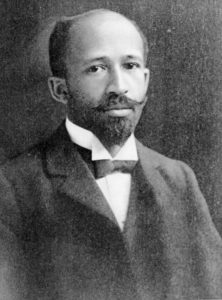 In Black Reconstruction, which Du Bois wrote while running a Capital seminar for his graduate students, Du Bois built on Marx’s argument that the Civil War was a revolutionary opening for the international working class by contending that the war was a proletarian revolution within a bourgeois republic. But to this, Du Bois added an important revision: as opposed to the white working class of the orthodox Marxist imagination, black slaves represented the proletariat. Du Bois labeled black resistance during the Civil War a “general strike,” thus equating it to the militant labor actions making headlines during the time he was writing Black Reconstruction, such as the West Coast Waterfront Strike of 1934. By resisting work on Confederate plantations, and by swamping approaching Union battle lines, black slaves helped win the Civil War and in the process emancipated themselves. Black slaves had created the revolutionary opening that Marx had envisioned. This was, in the words of Du Bois, “one of the most extraordinary experiments of Marxism that the world, before the Russian Revolution, had seen.”
In Black Reconstruction, which Du Bois wrote while running a Capital seminar for his graduate students, Du Bois built on Marx’s argument that the Civil War was a revolutionary opening for the international working class by contending that the war was a proletarian revolution within a bourgeois republic. But to this, Du Bois added an important revision: as opposed to the white working class of the orthodox Marxist imagination, black slaves represented the proletariat. Du Bois labeled black resistance during the Civil War a “general strike,” thus equating it to the militant labor actions making headlines during the time he was writing Black Reconstruction, such as the West Coast Waterfront Strike of 1934. By resisting work on Confederate plantations, and by swamping approaching Union battle lines, black slaves helped win the Civil War and in the process emancipated themselves. Black slaves had created the revolutionary opening that Marx had envisioned. This was, in the words of Du Bois, “one of the most extraordinary experiments of Marxism that the world, before the Russian Revolution, had seen.”
But class struggle went both ways. Building on his interpretation of the Civil War, Du Bois showed that Reconstruction was “America’s unfinished revolution,” as Eric Foner later termed it. When black labor came under white control once again—when the Union armies of liberation deserted the South in 1877—the revolution was smashed. Reconstruction was ended because a national elite determined that it needed a chastened black labor force, and it discovered that it could turn the southern white working class against blacks to keep them in their proverbial chains. In sum, the fact that Du Bois wrote his masterpiece with Marx on his mind—that he conceptualized it through a Marxist framework—was more than merely incidental. Du Bois’s use of Marx was constructive.
So what should we then make of Robinson’s argument that Du Bois not only revised Marx but, more than that, turned against the Marxist tradition in favor of the black radical tradition?
For Robinson, Du Bois premised his analysis on the two theoretical bedrocks that pointed in the direction of black Marxism: racial capitalism and the black radical tradition. Du Bois was straightforward about the racial components of capitalism in the first few pages of Black Reconstruction. “Black labor,” he wrote, “became the foundation not only of the Southern social structure, but of Northern manufacture and commerce, of the English factory system, of European commerce, of buying and selling on a world-wide scale; new cities were built on the results of black labor, and a new labor problem involving all white labor, arose both in Europe and in America.”
Moreover, Robinson argued that Du Bois had “at long last” found his way to the black radical tradition. Robinson highlighted Du Bois’s contention that the black slave revolt against the planter class took the form of syncretic religious fervor rather than class consciousness. “This was the coming of the Lord,” Du Bois wrote. “This was the fulfillment of prophecy and legend. It was the Golden Dawn, after chains of a thousand years.” It turns out “one of the most extraordinary experiments of Marxism” was predicated on a culture of religious belief that had roots in Africa. Rather than the opiate of the masses, religion was the spark. In Robinson’s creative reading of Black Reconstruction, this was evidence that Du Bois had unshackled himself from that European tradition known as Marxism and had instead embraced the black radical tradition.
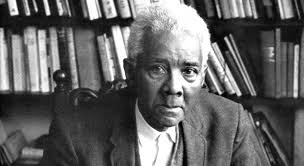 Robinson read C.L.R. James and The Black Jacobins in similarly imaginative fashion. The Black Jacobins is arguably more Marxist than Black Reconstruction. It reads like a drama—a tragedy, really—which is not surprising given that in 1934 James wrote a three-act play about Toussaint, which played in London and starred Paul Robeson. In this way, The Black Jacobins might seem more Shakespearean than Marxist. James’s narrative telling of Toussaint’s rise and fall is a tragedy in the theatrical sense of that word. But one of the appeals of Marx to many twentieth-century thinkers (as Richard King has argued) was the way in which his theory of history was dramatic. In the form of class struggle, Marxist theory captured the drama of modern history. Indeed, towards the end of The Black Jacobins, as the narrative of Toussaint and the Haitian Revolution reached its climax, James wrote: “There is no drama like the drama of history.”
Robinson read C.L.R. James and The Black Jacobins in similarly imaginative fashion. The Black Jacobins is arguably more Marxist than Black Reconstruction. It reads like a drama—a tragedy, really—which is not surprising given that in 1934 James wrote a three-act play about Toussaint, which played in London and starred Paul Robeson. In this way, The Black Jacobins might seem more Shakespearean than Marxist. James’s narrative telling of Toussaint’s rise and fall is a tragedy in the theatrical sense of that word. But one of the appeals of Marx to many twentieth-century thinkers (as Richard King has argued) was the way in which his theory of history was dramatic. In the form of class struggle, Marxist theory captured the drama of modern history. Indeed, towards the end of The Black Jacobins, as the narrative of Toussaint and the Haitian Revolution reached its climax, James wrote: “There is no drama like the drama of history.”
Beyond endowing historical narrative with a dramatic structure, Marx’s theory of history was also influential as a compelling way to think about the interplay between events and people. In The Black Jacobins, James toggled between competing assumptions about events determining humans, and vice versa, humans determining events. For him Toussaint was a great man in the Whig History sense. Born a slave, he made himself into arguably the greatest revolutionary in the Age of Revolutions. And yet, as James wrote, “Toussaint did not make the revolution. It was the revolution that made Toussaint.” So, it seemed the Marxist emphasis on larger social relations—including revolution—spoiled such Whiggish fun. But perhaps not. James followed the line about the revolution making Toussaint with a curious qualifier: “And even that is not the whole truth.” And even that is not the whole truth. James’s seeming uncertainty about causality might be his way of pivoting back and forth between Marxism and the black radical tradition. Whereas the Marxist tradition is deeply historicist—when it’s not teleological—the black radical tradition has a touch of the trans-historical (and I don’t use that term as a pejorative). Slaves became revolutionaries by channeling African ancestors untouched by the intrigues of European history. Or more to Robinson’s point, the black radical tradition emerged the very second Africans were put in chains.
But this is more Robinson’s reading of James than James’s understanding of what he was doing.
In describing his theory of history in the introduction to The Black Jacobins, James hewed closely to Marx’s approach, as laid out in The Eighteenth Brumaire of Louis Bonaparte. James wrote: “Great men make history, but only such history as it is possible for them to make. Their freedom of achievement is limited by the necessities of their environment. To portray the limits of those necessities and the realisation, complete or partial, of all possibilities, that is the true business of the historian.” Sound familiar? It should. In The Eighteenth Brumaire Marx wrote: “Men make their own history, but they do not make it as they please; they do not make it under self-selected circumstances, but under circumstances existing already, given and transmitted from the past.” That James was shaped by his reading of Marx is hardly surprising given that James was a committed socialist revolutionary who called himself a Leninist.
James attended to the ways in which larger forces created the conditions for revolution in very Marxist fashion. He wrote: “The slaves worked on the land, and, like revolutionary peasants everywhere, they aimed at the extermination of their oppressors. But working and living together in gangs of hundreds on the huge sugar-factories which covered North Plain, they were closer to a modern proletariat than any group of workers in existence at the time, and the rising was, therefore, a thoroughly prepared and organized mass movement.” Nonetheless, conditions were not always ripe for revolution.
In the same way that Du Bois showed how the Civil War made a general strike among slaves possible, James showed how larger events made the San Domingo revolution possible. The French Revolution not only created chaos that served as an opening for the slaves, but it also generated an ethos of liberty that found its way across the Atlantic. If the French masses could overthrow their venal monarchy, then the slaves could overthrow their degenerate planter class. The French Revolution could not be cordoned off at the borders of France proper. “Revolution, says Karl Marx, is the locomotive of history. Here was a locomotive that had travelled at remarkable speed…” In this, James made what has since become a standard cause-and-effect argument about the Haitian revolution. Had this been his only argument, it is unlikely that The Black Jacobins would attained canon status. But James’s analytical work was hardly finished.
James made clear that the connective tissue between home country and empire was not one-directional. He argued that “the slave trade and slavery were the economic basis of the French Revolution.” As the French bourgeoisie grew rich from the slave trade and related industries, it asserted its newfound confidence relative to the aristocracy, which precipitated a revolution that eventually spread to the French masses and the San Domingo slaves. How ironic! But just as Du Bois showed that the Civil War was not the end of struggle, James demonstrated the same with regards to the French Revolution and the slave uprising in San Domingo. The French merchant class ultimately conquered the democratic masses and sought to do the same in San Domingo.
James contended that the class question in Paris ultimately determined how France would approach the colonial question. When the radical masses were in power, France saw the revolutionary blacks of San Domingo as their allies and republican countrymen. But with the bourgeoisie in power after the demise of Robespierre, France sought the restoration of slavery in San Domingo. Thus, Toussaint’s hopes that San Domingo would be a crucial component of a republican France were dashed. As he withered to his death in a French prison on the orders of Napoleon Bonaparte, a war for independence raged and ultimately turned into a racial war of annihilation. In the black radical tradition as elaborated by Robinson, one would think this was a necessary if not happy outcome. But to James this was a tragedy, not because the immensely cruel San Domingo whites were wiped out—he noted that they had that coming to them—and not necessarily because Toussaint died in a French prison before he could witness a free San Domingo, but rather because Toussaint’s dream of an interracial and republican San Domingo was crushed. James was less sanguine than Toussaint about the possibilities of interracial democracy in a nation born of slavery. But that did not make the results less tragic.
In the end, Toussaint failed because his idea of revolution was European. James argued that capitalism made the black slave a revolutionary just as it had made the industrial worker one, but that whereas the latter’s culture was shot through with bourgeois norms, the former had made a revolutionary culture out of its African roots. In other words, Haitian Voodoo was a thoroughly anti-bourgeois and anti-European revolutionary culture. This move, according to Robinson, put James into the camp of the black radical tradition. “This was a complete departure from the way in which Marx and Engels had conceptualized the transformative and rationalizing significance of the bourgeoisie,” Robinson wrote. “It implied (and James did not see this) that bourgeois culture and thought and ideology were irrelevant to the development of revolutionary consciousness among Black and other Third World peoples.”
Although I agree with Robinson that Du Bois and James expanded on Marx in crucial ways, and that their attention to the history of racial capitalism is what made their analyses so profound, I think Robinson was too eager to separate Du Bois and James from Marx—too eager to distinguish the black radical tradition from the Marxist tradition. Just as Marx was shaped by his own context, which led him to wrongly believe the European working class was the revolutionary vanguard, so it was with Robinson, whose framework was grounded in a Black Power movement that understandably sought distance from a white New Left and even more, a white academy. But does this perspective make sense now? That’s the question that begs discussion—and I am genuinely interested in what readers think.

9 Thoughts on this Post
S-USIH Comment Policy
We ask that those who participate in the discussions generated in the Comments section do so with the same decorum as they would in any other academic setting or context. Since the USIH bloggers write under our real names, we would prefer that our commenters also identify themselves by their real name. As our primary goal is to stimulate and engage in fruitful and productive discussion, ad hominem attacks (personal or professional), unnecessary insults, and/or mean-spiritedness have no place in the USIH Blog’s Comments section. Therefore, we reserve the right to remove any comments that contain any of the above and/or are not intended to further the discussion of the topic of the post. We welcome suggestions for corrections to any of our posts. As the official blog of the Society of US Intellectual History, we hope to foster a diverse community of scholars and readers who engage with one another in discussions of US intellectual history, broadly understood.
While there may be several and eminent heuristic reasons for historically conceptualizing a “black radical tradition,” in the end I would agree with the proposition that “Robinson was too eager to separate Du Bois and James from Marx—too eager to distinguish the black radical tradition from the Marxist tradition.” So too, at least with respect to W.E.B. Dubois, would Bill V. Mullen, as evidenced in his recent book, Un-American: W.E.B. Du Bois and the Century of World Revolution (Temple University Press, 2015). The case of C.L.R. James is, I think, more unequivocal in this regard. In any case, thanks for posting your paper, the argument and specific thesis of which deserves wide discussion and debate, whatever one’s existing views on the subject (which, I suspect, are unlikely to change).
Du Bois and James, unlike many Marxists, had certainly read Marx – but surely by the ’30s they were familiar as well with Lenin on imperialism, something of a missing link in the transition described here.
Andrew,
You mentioned on Facebook that you received some challenging comments and questions to the paper. Do you care to forward some here, to further develop the discussion?
– TL
If not Facebook, maybe Twitter?
People were receptive and generous with their comments, but definitely challenged my notion that Robinson read too much into Du Bois and James distancing themselves from Marx. In sticking to a close textual reading of Black Reconstruction and Black Jacobins, I just don’t see it that way.
I think the use of Black Radical Marxism is best shown in Ilana Mercer’s book, Into the Cannibals Pot. It reveals how blacks are stirred up as gullible tools (fools) of Marxism through Die-versity to target, genocide and destroy the white race bringing a major economic blight in South Africa.http://www.ilanamercer.com/cannibals-pot/
Why do we not want to leave the past in the past but we ALWAYS are creating the blacks to be the po-victims. Race-hustling seems to be the game that ALWAYS gets played. I’m Irish/Catholic but I never see my white self as some po-victim! https://scontent.ford1-1.fna.fbcdn.net/v/t1.0-9/17457830_1466376936768109_4466511973787958203_n.jpg?oh=e8d43708e420c913308e27118c2085c4&oe=59965662
“There is a class of colored people who make a business of keeping the troubles, the wrongs, and the hardships of the Negro race before the public. Having learned that they are able to make a living out of their troubles, they have grown into the settled habit of advertising their wrongs-partly because they want sympathy and partly because it pays. Some of these people do not want the Negro to lose his grievances, because they do not want to lose their jobs.” — Booker T. Washington
How does someone like you find your way to a blog like this? You’re better off trolling someone who gives a damn.